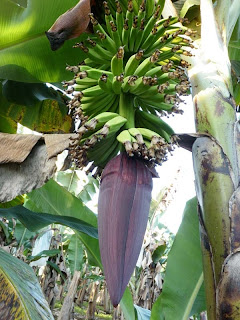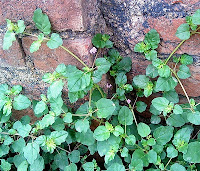DIABETES
Diabetes is a
group of metabolic disease in which a person has high blood sugar. Diabetes is
a degenerative metabolic disorder affecting the way our bodies used digested
food for growth and energy.
History of diabetes:
The term diabetes is the shortened version of the full name diabetes
mellitus. Diabetes - is derived for
Greek word ‘siphon’ which means pass through
, mellitus - is derived for Latin word which means honey or sweet . This is
because in diabetes excess sugar is found in blood as well as urine.Diabetes is first recorded in English in the year of 1425.Mr.Thomas added mellitus to the word diabetes in the year of 1675.The sweet taste has been noticed in urine by ancient Greeks, Chinese,
Indians, Egyptians and Persians literature shows the evidence of this problem.Sushruta, Arataeus and Thomas wills were the early
pioneers of the treatment of diabetes.At the time of 18th and 19th century Johan Peter Frank differentiated between the
diabetes mellitus and diabetes insipidus.
In 1910 Sir Edward Albert sharper Schafer found the diabetes resulted from lack of insulin.Insula means islands it denotes insulin producing islets of langerhans in the pancreas.Diabetes has been recognized as a distinct medical condition for at least 3500 years. Globally as of a 2013 estimation around 382 million people have diabetes world-wide with type 2 diabetes.The stage before diabetes is called pre-diabetes. Impaired glucose tolerance is a condition where your blood sugar levels are higher than the normal levels.People those who have pre- diabetes are at the risk of developing type 2 diabetes later on their life.
Normal levels of
glucose in the blood:
Fasting
plasma glucose levels 120-130 mg/dl.
Postprandial
plasma glucose levels 180-200 mg/dl.
(Plasma glucose
levels after 2 hours of a normal meal)
If plasma
glucose levels are more than normal levels it is called hyperglycaemia.
If plasma glucose levels are less than normal levels it is called hypoglycaemia.
Hypoglycaemia can be dangerous if neglected.
Causes of hypoglycaemia are over dose of insulin or anti diabetic
medications, skipping or delaying meal, too much of exercise, illness, incorrect
timing of insulin or tablets, excess alcohol intake.
Symptoms like excess hunger, sweating, shivering, palpitation,
weakness, nervousness, tremors, giddiness, blurred vision, change in mental
status. This symptoms may be followed by fainting if not treated this symptoms
may differ from person to person and time to time.
If the symptom is mild taken any food or drink that is readily
available .Take sugar or glucose if the symptom is very severe.
Pancreas:
Pancreas is an oblong flattened gland located deep in the abdomen .The pancreas is about 6 inches
long and sits across the back of the abdomen behind the stomach .It is the
largest mixocrine gland in the body that is it will do both exocrine and
endocrine functions .pancreas contains special type cells producing region called islets of langerhans.
It contains three types of cells like
alpha, beta and delta. Alpha cells produce hormone called glucagon which
converts the glycogen into glucose .This helps to increase the sugar level in
the blood. Beta cells secrete hormone called insulin .which converts glucose
into glycogen .This helps to maintain the normal blood sugar level in the body.
Delta cells secrete hormone called somatostatin which helps to stop the excess
production of insulin and glucagon.
There
are three main types of diabetes
.Type 1 diabetes
Type 2 diabetes
Gestational diabetes.
TYPE-1 DIABETES:
TYPE-1 DIABETES:
Type 1 diabetes is an auto immune disease that means the body’s
immune systems mistakes its own cells for invading pathogens that need to be
destroyed .In this type of diabetes where the pancreas produces very little
insulin or no insulin at all. This type of diabetes is called insulin dependent
diabetes mellitus or juvenile diabetes .people under the age of twenty will
suffer from this type of diabetes.
CAUSES:
- Due to the problems of genetic
cells the functions of pancreas will get affected and stop functioning
- Viral infection in pancreas.
- Chronic pancreatitis (is a condition
which causes inflammation of the pancreas).
- Pancreatectomy – surgical removal of
pancreas.
- Pancreatic cancer.
SYMPTOMS:
- Polyuria (Frequent urination)
- Polydipsia(increase thirst )
- Polyphagia(increase hunger)
- Weight loss.
- Blurred vision
- irritability
- Dry tongue
- Dry skin.
- Itching private spots.
- Burning pain in hands and feet.
- Numbness in hands and feet.
- Giddiness.
- Non healing ulcers.
- Sunken eye balls.
These
symptoms may develop rapidly in type 1 diabetes.
Frederick Banting discovered insulin in (1921-1922) for treating diabetes.
Insulin from cattle and pigs was used for many years to treat
diabetes and saved millions of life.
The first genetically engineered synthetic human insulin was
produced in 1978 by using E.coil bacteria to produce insulin.
Humalog is modified human insulin and it was approved by the food
and drug administration in 1996.
There are three types of human insulin
- Regular insulin
- Ultra rapid action insulin.
- Ultra long activity insulin.
Insulin is very effective and helpful for treating type 1 diabetes .It
must be managed with insulin injections only.
TYPE 2 DIABETES:
The pancreas does not produce enough insulin or the body cells do
not properly use insulin (insulin resistance). This diabetes is called non
insulin dependent diabetes.
CAUSES:
- Life style
- Over weight.
- Lack of exercise
- Un healthy diet
- Age
- Gastro intestinal problem
- Thyroid problem
- Certain drugs.
- Hormonal imbalance
- Glucagonoma- is a condition in which the body produces too much of hormone glucagon.
- Cushing syndrome – a condition characterised by excess production of cortisol.
- Pancreatic cancer.
SYMPTOMS:
- Polyuria (Frequent urination)
- Polydipsia(increase thirst )
- Polyphagia(increase hunger)
- Weight loss.
- Blurred vision
- Irritability
- Dry tongue.
- Dry skin.
- Itching private spots.
- Burning pain in hands and feet.
- Numbness in hands and feet.
- Giddiness.
- Non healing ulcers.
- Sunken eye balls.
These
symptoms may develop slowly in type-2 diabetes.
GESTATIONAL
DIABETES:
It occurs in women during pregnancy this will disappear after
pasturation .This type of diabetes is due to inadequate secretion of insulin or insulin resistance (body cells
are not responding to the insulin) .Those women who have this type of diabetes
have a higher risk of developing type 2 diabetes. Nearly 4% of women develop
gestational diabetes mostly during the 2 trimester of pregnancy.
COMPLICATIONS OF
DIABETES:
- The risk of long term complications will develop after many years (10-20 yrs).
- Damage to the blood vessels.
- Cardio vascular disease.
- Macro vascular disease like stroke.
- Peripheral vascular disease.
- Damaging eyes (retinopathy)
- Diabetic retinopathy damage to the blood vessels in the retina of the eyes can result in gradual vision loss and potentially blindness.
- Blindness
- Cataract
- Damage to the kidneys (diabetic nephropathy)
- Damage to the kidney is known as diabetic nephropathy can lead to scarring urine protein loss, chronic kidney disease.
- Kidney failure.
- Damage to the nerves (diabetic neuropathy)
- Damage to the nerves in the body is known as diabetic neuropathy. It is the most common complication of diabetes. The symptoms include numbness, tingling pain, altered pain sensation which can damage to the skin.
- Diabetes related foot problems :
- Diabetic foot ulcers may occur and can difficult to treat, painful muscle wasting and weakness.
- Boils, ulcers, carbuncles.
- Fungal infections
- Alternative diarrhoea.
- Obstinate constipation
- Diabetic dermadromes – skin rashes.
- Diabetic ketoacidosis:
- Nausea, regurgitation, abdominal pain, smell of acetone breath, deep breathing dehydration, decreased level of consciousness.
- Coma.
After diagnosing
a diabetes one should take proper medicines for controlling and keeping the
normal sugar levels in the blood. Proper diet and regular exercise will be
needed to control blood sugar levels. There are lots of medications are
available for treating diabetes.
NATURAL TREATMENT FOR DIABETES:
Certain vitamins and mineral supplement have proven to be very
effective in controlling diabetes. Supplementation of chromium will decrease
the glucose level in blood and increase the glucose tolerant factor.
Magnesium supplements will prevent the complications of diabetes
such as retinopathy and heart diseases.
Supplementation of vitamin C will improve the immunity power and
give strength to the body.
Supplementation of vitamin B12 is necessary for avoiding
diabetic neuropathy. Omega 3 fatty acids will lowers the tri-glycerides, co-enzyme Q10
stimulate the production of insulin.
Zinc helps in production of
RBC.
NATURAL FOOD STUFFS
FOR DIABETES:
High dietary fibre food stuffs like greens especially moringa
greens, fenugreek ,valarai, curry leaves, corrinader leaves, mint leaves, spanich, celery, turmeric, fenugreek seeds, cinnamon, cumin
seeds, olive seeds, green tea, sprouted grams ,banana stem, banana flower.
Vegetables like beans, cluster beans, cucumber, onion, garlic, bitter
gourd, ivy gourd, tomato, capsicum, black beans, and blue corn.
Fruits like jamun fruit, kiwi fruit, passion fruit, lemon, amla, papaya,
black berries, blue berries, and tart cherries.
Nuts like walnuts, almond.
Pulses like peas, Bengal gram, horse gram, soya bean varieties.
Some
herbs:
- Costus igneus
- Gymnema sylvestre
- Syzygium jambolanum
- Senna auriculata
These
are the very effective herbs to treat diabetes.
REVERSIABLE DIET FOR DIABETES:
Nowadays type 2 diabetes is being a
common disease. We should check our blood sugar level periodically after 35
years .Main causes of type 2 diabetes is lack of exercise, intake of
high calorie food and being a over-weight .Type 2 diabetes is
reversible one .For that you have to take low calories, fibre rich and
nutritious diet .Following diet will help the type 2 diabetes patients get reversible.
You should fallow this diet for 10
to 14 days this diet will surely bring blood sugars normal and get
reversed from type 2 diabetes.
DIET CHART
MORNING
|
|
6:00 AM
|
Chew 2 leaves of Costus igneus (Or)
insulin plant with empty stomach.
|
6:30 AM
|
1 glass of lime juice adds with 2 ml of honey prepare
with hot water) or 1 cup of green tea or hibiscus tea (or) 100 ml of skimmed
(without sugar).
|
8:00 AM
|
1 cup of oats porridge with one cup of boiled mixed vegetables
.( beans ,cluster beans ,broad beans ,bitter gourd ,ivy gourd , spinach
,drumstick leaves ,ladies finger ,banana flower ,banana stem )4 pieces of
walnuts(or)almonds.
|
11:00 AM
|
1 cup of tomato juice or 1 cup of orange juice (or) 1 cup of
carrot juice (without sugar) (or) 1 cup of butter milk with 30
grams of germinated peas.
|
LUNCH
|
|
12:30 PM
|
small size chapattis - 2 with 1 cup of
vegetable salads( cucumber ,onion ,radish ,cabbage ,celery ) with guava
fruit or kiwi fruit or apple (50grams
).
|
4:00 PM
|
1 cup of tea (prepared with skimmed milk, without sugar) with 30
grams of boiled channa.
|
DINNER
|
|
7:30 PM
|
2 idly with coriander chutney ( or ) garlic chutney
( or) curry leaves chutney ( or ) small onion chutney .( use only
olive oil ) with one small piece of papaya (or) 4-5 numbers
of jamun fruits (or)30 grams of grapes(or)2 pieces of dates.
|
10:00 PM
|
100 ml of skimmed milk (without sugar).
|
HOMEOPATHIC
TREATMENT FOR DIABETES:
Acidum phosphoricum, gymnema sylvestra, arsenicumbromatum, Syzygium
jambolanum, murexpurpurea, sanicula, helonias dioica, calcarea phosphoric, uranium
nitricum and iodium.
Yogasanas for diabetes:
Yogasanas and pranayama are very good methods for controlling
diabetes.
Yogasanas like dhanurasana, bhujangasana, paschimottanasana,
sarvangasana, mayurasana, matsyasana, eka padasana and chakrasana.
These asanas will stimulate the beta cells in the pancreas and secrete
more insulin and this will regulate the functions of pancreas and digestive
system.
If these asanas are done regularly it will prevent diabetes.
Treatment plans include:
- Self-monitoring of blood glucose level
- Exercise and diet guidelines
- Oral medications and/or insulin
- Target HbA1c level should be as close to 7 percent as possible
- Regular checks
Every
three months: HbA1c, feet, and height, weight and blood pressure should be
checked, along with a physical examination for complications of diabetes.
At least
once a year, patients should have a diabetes education review, an eye exam, a
lipid profile (cholesterol - HDL, LDL; triglycerides), kidney tests
(creatinine, urine protein, and microalbumin), a peripheral nerve test, and a
treadmill test or ECG.
Prevention:
- Maintain normal body weight
- Do regular exercise like walking, cycling, swimming for 40 minutes per day.
- Do above said yogasanas daily
- Stress free life.Take low calories foods like fruits and vegetables
- Avoid junk foods
- Take more amount of fibre rich foods.





I would like to give you huge thumbs up for the information you have shared with us. Keep up the good writing.
ReplyDeletethanks a lot.vaazhga valamudan.
Delete